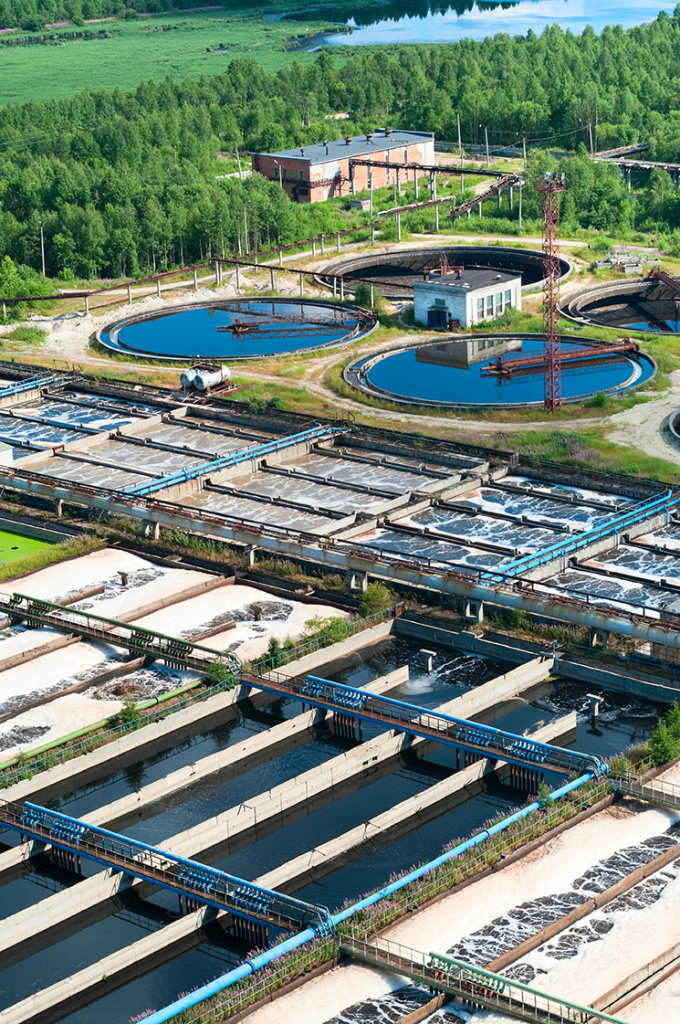Growth strategies to create a best-in-class water treatment company in China
From 2006 to 2013, China increased its municipal waste water volume treatment rate from approximately 45 to 80 per cent. In the process, many players have gone public and shown strong top-line growth. However, this rapid expansion of municipal wastewater treatment has led to declining net profit margins and a reduction of greenfield opportunities for companies that mainly operate treatment facilities. In the following article, Michel Brekelmans and Steve Cao from L.E.K. Consulting Shanghai explore winning strategies that can help to improve performance and create leaders in China’s water treatment industry.
We recently witnessed a renewed interest in China’s cleantech sectors following the initial surge of five to six years ago. Although water treatment doesn’t have the same ‘sex appeal’ as solar energy or battery-powered vehicles, the development of the Chinese water treatment industry has nonetheless been spectacular in terms of growth and the opportunities created by industry champions.
However, the industry has reached an inflection point – the easy growth route is getting harder and harder to follow. Non-organic growth approaches and an improvement in organisational performance may be necessary for further value creation as the market environment is less compelling than before:
- The market is expected to grow only moderately going forward: further penetration growth is expected to be limited after the rapid growth of previous decades.
- The industry is fragmented, though most of the more than 400 companies have established a certain geographical focus with relatively high entry barriers due to deep local government involvement.
- In general, waste water treatment plants operate at low margins under the current tariff regime and therefore rely heavily on government subsidies.
Of the more than 400 companies serving the industry, 27 listed companies contribute approximately 28 per cent of the total revenue. These players grew on average between 30 to 60 per cent per year between 2010 and 2014, but net profit margins declined around one and half percentage points per year over the same period.
With profits waning, industry participants and investors alike would be right to look for new opportunities in companies that either play across subsectors of the water treatment industry or play in a single, high-value section of the industry value chain. Wastewater treatment operations are becoming increasingly commoditised and inefficient state run operations are becoming harder to justify. In order to combat declining margins, companies will need to think more carefully on how to maintain and grow profit margins in this industry.
This prompts the questions: what will drive future profits and shareholder value? For companies that continue to succeed in the industry, what allows them to perform better than their peers? What factors go into creating a successful company in this industry?
Based on our analysis of the major players in China, the main levers for future growth/value creation include continued capacity expansion at lower-level cities/counties, cost efficiency through operational improvement and vertical integration along the value chain.
- County-level projects are considered to be a growth area; however, companies need to run different operation models to enter this market segment as these projects are often remotely located and have much smaller scale in terms of treatment capacity. Mergers and acquisitions (M&A) might be required if there is no pre-existing know-how/experience in successfully handling these types of projects.
- As electricity, chemicals and maintenance constitute the majority of running costs, operational improvement opportunities exist through cost reduction, particularly for stated-owned players.
- Sizable synergies can be generated through vertical integration into other parts of the value chain such as engineering, procurement and construction (EPC), water management equipment manufacturing, treatment consumable production and servicing. International companies like Veolia and GDF Suez have successfully moved down this path.
- Other options include expansion into adjacency business such as water supply or M&A to create scale synergies.
In China, emerging leaders are appearing that are pursuing developments along each of these strategy levers. For example, Heilongjiang Interchina Water Treatment has managed to generate above-average profitability by meeting many of the above criteria. Although it built much of its earlier growth on larger water projects, it is now turning to smaller cities in more rural areas to grow. In addition to acting as an operator, it provides EPC consulting throughout the value chain. It also stated in its 2014 financial report that it plans on engaging in M&A opportunities in order to enter new markets. It also has various levels of cooperation with foreign, water-treatment technology companies that provide high quality, modern equipment.
Below is a list of questions that are designed to help executives of and investors in water treatment companies in China determine whether they are pursuing these strategies in the right way:
Core business expansion
How has the company typically won tenders from municipal governments? What are the key success factors? How will this help the company continue to win future business from those governments? Does the company get regional exclusivity for future waste water treatment capacity as a result of increasing water consumption under the current contracts?
Penetration into lower-tier cities and counties
As the growth rate of waste water treatment in lower-tier cities and counties is expected to be faster than that in larger cities, how should a company best position itself to enter these markets? What government connections does it have to improve its chances of winning new business?
Vertically integrate across the value chain
How should a company expand into others parts of the water treatment value chain, such as EPC, flow control system engineering, treatment consumables or value added services? Has the target company entered into deep processing business including recycling water supplier for industrial use/non-drinkable residential use or sludge management?
Horizontally integrate into adjacent areas
How can a company make a lateral move into other types of water treatment like commercial or residential? What sort of regulatory hurdles exist? Can the target company tap into its existing resources to expand horizontally into water supply and other water management (e.g., flow control, smart meter) business?
Executing a roll-up strategy to dominate regional markets
Is the company in a position to grow through acquisition if necessary? How can it grow the bottom line by taking advantage of synergies between new acquisitions and the existing business?
Organisational excellence to drive profitability
What corporate structure supports the business model and current levels of growth? What project development techniques or new technologies allow it to perform better than the competition? Does the company have successful track record in build-operate-transfer (BOT) projects? How strong are the relationships with the local authorities and are tariffs set at a level that will generate attractive returns?
Companies that successfully pursue these strategies are generally better positioned than those who don’t. The different strategies are not mutually exclusive – each factor is just as important as the other, and by combining them an even stronger company can be built. The challenge is not only to identify and select the right set of strategies, but also to build organisational capabilities and resources to ensure the plan is successfully executed and profitability is restored to a higher level. This will be the key factor in becoming an industry leader in China’s waste water industry.
L.E.K. Consulting is one of the top global consulting firms specialised in strategy formulation and organisational development, strategy activation, operational improvement and M&A services. L.E.K. supports clients in evaluating major investments and developing strategies and the organisational capabilities that have significant impact on the performance of our clients. L.E.K operates from 22 offices globally and has been operating in China since 1998 through offices in Shanghai and Beijing.




Recent Comments